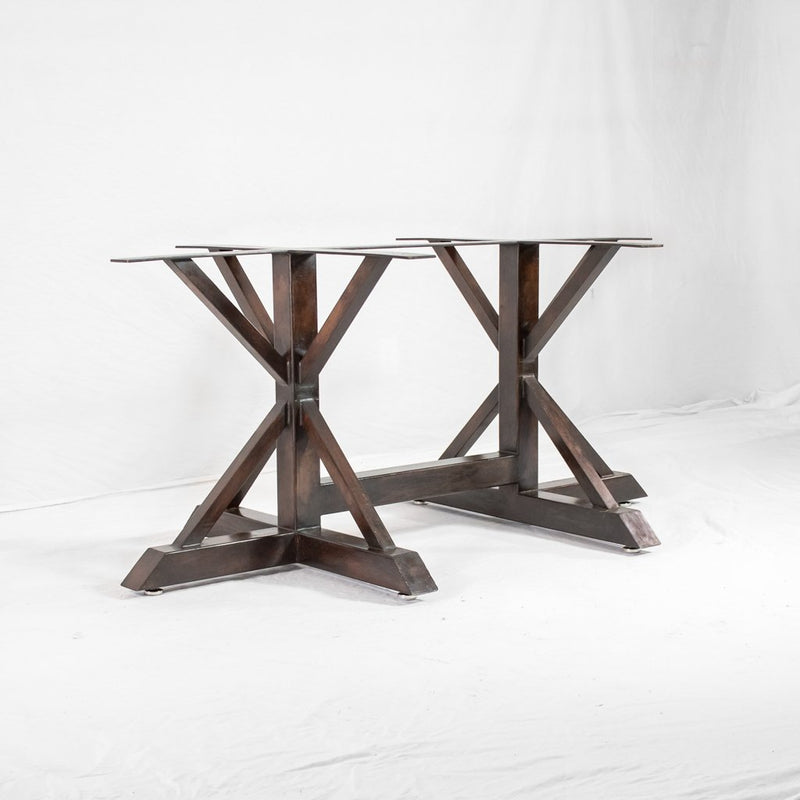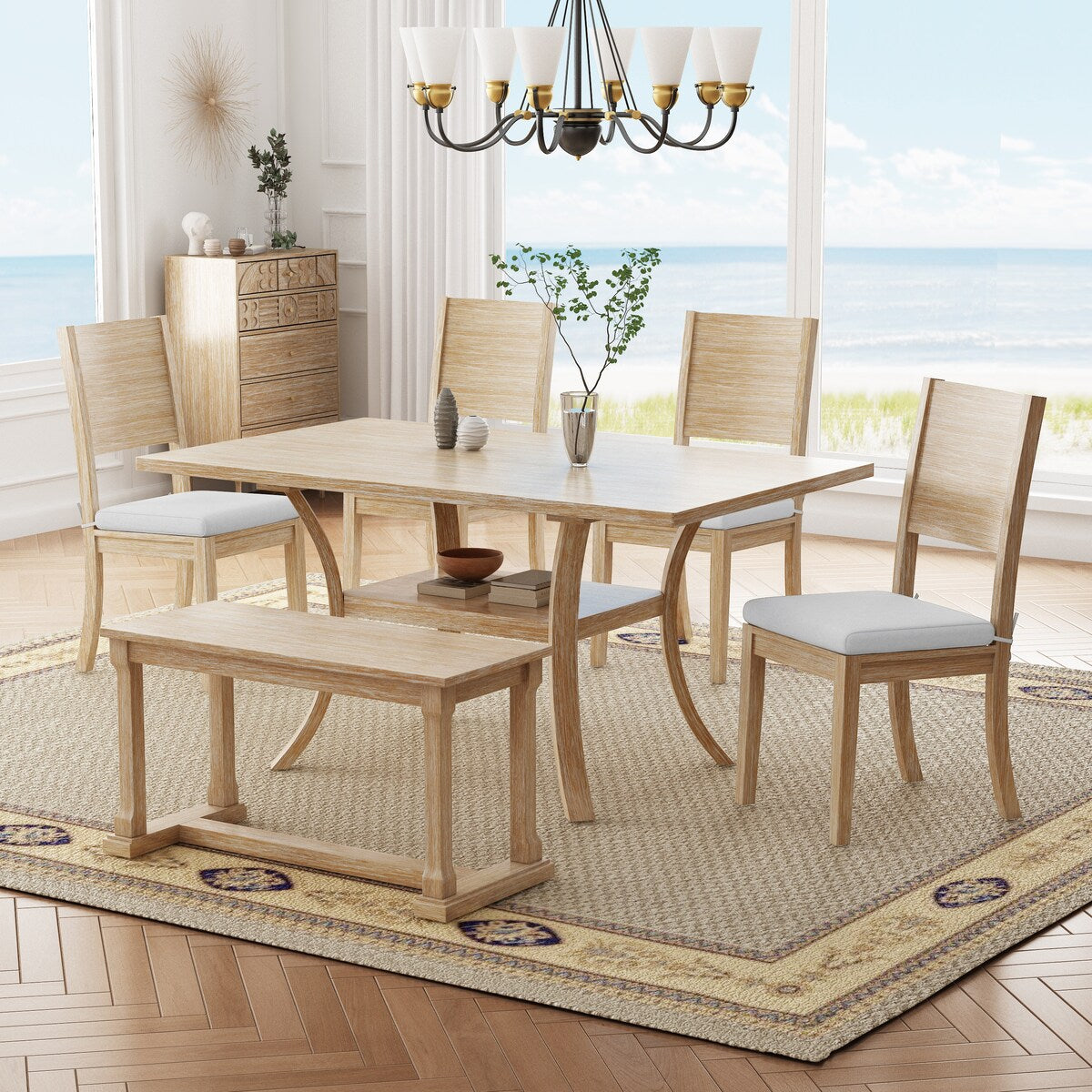Expert Tips for Setting Up Eating Room Table Legs for Optimum Stability
When it pertains to installing eating space table legs, achieving optimum stability is paramount for both capability and aesthetics. The procedure begins with picking the ideal materials and equipment, complied with by meticulous positioning and consideration of weight circulation. Each step plays a critical function in ensuring that the completed product stands up to everyday usage without compromising safety or design stability. However, comprehending the subtleties of these elements can dramatically influence the total outcome. What particular strategies can enhance stability also further?
Choose the Right Legs
When selecting the proper legs for your eating area table, it is vital to take into consideration both functionality and aesthetic appeals. The legs you pick will dramatically impact the overall style and stability of the table. Review the table's planned usage; if you anticipate regular events, stronger legs, such as those made from solid wood or metal, may be extra suitable, as they supply increased resilience and support.
Typical eating tables generally vary from 28 to 30 inches in elevation, so ensure the legs line up with this standard for convenience. Tapered legs can include a contemporary touch, while transformed legs may convey an extra classic visual.

Select Appropriate Equipment
How can the ideal equipment enhance the stability and durability of your eating room table? The choice of proper hardware is essential to guaranteeing that the legs of your table are safely connected and able to hold up against regular use. Top notch screws, screws, and braces provide the required stamina to sustain the weight of the table, along with any additional loads put upon it during celebrations or dishes.
When picking screws, choose those made from durable materials such as stainless steel or brass, which resist rust and preserve integrity in time. The length of the screws is similarly essential; they must permeate deeply right into the table's structure without jeopardizing stability. For bolted connections, consider using lock washers to stop loosening because of vibration or motion.
Additionally, using edge brackets can add added assistance, especially for bigger tables or those with much heavier tops. These brackets disperse weight uniformly and help keep the table's shape. Ensuring that the equipment you select is appropriate for the certain materials of your table will certainly additionally enhance its total stability and longevity, enabling you to enjoy your eating experience for years ahead.
Ensure Appropriate Placement
Appropriate alignment of eating room table legs is necessary for both aesthetic allure and functional security. Misaligned legs can lead to an unequal tabletop, which may not just be visually unattractive but likewise endanger the table's usability. To attain optimal positioning, start by determining the range from the table's corners to the leg accessory factors. This guarantees that each leg is located equidistant from the sides, creating a well balanced appearance.
Utilize a level throughout installment to verify that each leg is perpendicular to the tabletop. This action is essential, as also small discrepancies can escalate into significant security issues in time. It is suggested to note the desired leg positions on the underside of the table with a pencil or concealing tape prior to protecting them. This practice works as a visual guide, permitting modifications as required.
Additionally, verify the positioning after the preliminary screws are tightened, as adjustments may be necessary prior to totally safeguarding the hardware. By prioritizing appropriate positioning, you not only enhance the table's general style however also guarantee that it remains stable and functional for many years to find.

Think About Weight Distribution
After ensuring correct placement of the dining-room table legs, it's vital to take into consideration weight distribution to enhance security and functionality. dining room table legs. Correct weight circulation is essential in preventing tottering and making certain that the table can support its intended tons without risk of tipping or falling down
When positioning the legs, guarantee they are placed at equivalent distances from the facility of the table to evenly disperse the weight across the framework. Consider the weight of the table top and any products that will frequently hinge on it, such as tabletop home appliances or attractive pieces. Tables with larger surfaces must preferably have legs positioned closer to the edges, as this takes full advantage of the base of assistance and reduces the threat of instability.
Additionally, if the table is meant for usage in a high-traffic area, think about making use of heavier materials for the legs or including stabilizing elements, such as cross-bracing or a reduced shelf - dining investigate this site room table legs. These changes can help preserve equilibrium and prevent moving throughout usage. Ultimately, a well-considered weight distribution method will significantly improve the table's general efficiency, ensuring it stays a useful and attractive focal point for your eating room
Examination Stability Before Use
Checking the stability of the dining room table prior to usage is a vital step that ought to not be forgotten. If visit this site the table shows instability, recognize the legs or joints that might need modification.
Next, examine that all screws and bolts are tightened properly. Loosened connections can result in instability and potential damages in time. If required, make use of timber glue on joints to enhance security, guaranteeing to allow ample drying out time.

Conclusion
Finally, the installation of dining-room table legs requires cautious factor to consider of materials, alignment, weight, and hardware circulation to attain maximum stability. By selecting premium bolts and sturdy legs, guaranteeing exact placement, and distributing weight evenly, the architectural honesty of the table can be considerably improved. Carrying out a security examination before normal usage further guarantees that the table will stand up to daily stress, therefore giving a dependable and risk-free dining experience.
When it comes to installing dining room table legs, achieving maximum stability is paramount for both functionality and aesthetic appeals. The legs you select will substantially affect the general style and stability of the table (dining room table legs). Basic dining tables generally range from 28 to 30 inches in elevation, so make certain the legs straighten with this requirement for comfort.Proper alignment of eating space table legs is necessary for both aesthetic appeal and functional security.In final thought, the setup helpful site of dining area table legs calls for cautious consideration of products, weight, positioning, and hardware circulation to accomplish maximum security
Comments on “Add Charm and Elegance to Your Space with Distinct Dining Room Table Legs”